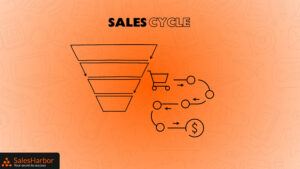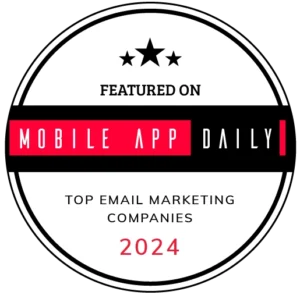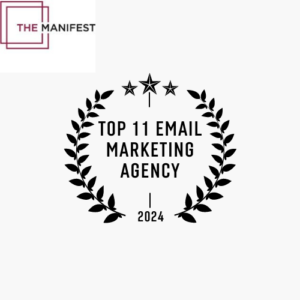Lead generation is crucial for business growth and maintaining a steady flow of qualified leads that support sales and long-term success. However, choosing the right strategy can be challenging. Should you focus on inbound strategies, where customers find you organically, or outbound, where you actively reach out to potential leads?
Picking the right approach can save you time, money, and effort. In this blog, we will discuss how to decide which strategy works best for your business.
If you don’t know about lead generation and inbound and outbound strategies check out this blog – Inbound vs Outbound lead generation
Understanding Your Business Goals
Before picking a strategy, it’s essential to clearly define your business goals. Are you aiming for rapid growth, or are you focused on long-term sustainability? Let’s explore how these goals affect your lead generation strategy.
1. Short-Term vs. Long-Term Growth
If your goal is to see quick results, outbound lead generation might be your best option. It allows you to directly target potential customers through cold emails, phone calls, or paid ads(Google and Meta). For example, if you’re launching a new product and want immediate visibility, outbound can help you reach people fast.
On the other hand, if you’re looking for long-term growth, inbound lead generation is more effective. By creating valuable content, optimizing your website for search engines (SEO), and building your social media presence, you attract leads naturally over time. Inbound might take longer to produce results, but it builds trust and can lead to more loyal customers in the long run.
2. Scaling Your Business
Are you looking to grow your business quickly, or are you focused on gradual, steady growth?
Outbound lead generation can quickly scale your efforts because you can contact more leads faster. For example, a software company might run paid ads to attract new clients and expand its user base rapidly.
However, if your focus is on building relationships, inbound might be the better choice. Inbound strategies, like content marketing, help you engage with leads who are genuinely interested in your product or service, leading to higher-quality connections.
3. Lead Volume vs. Lead Quality
Outbound is great for high-volume lead generation. You can send out many emails or run ad campaigns targeting a large audience, but not all leads will convert. Inbound, however, focuses more on lead quality. People who find you through your blog, social media, or SEO are likely already interested in your services.

Understanding Your Audience
Your target audience plays a significant role in picking the right strategy. Understanding their preferences and behavior will guide your decision.
1. Where Does Your Audience Hang Out?
If your audience spends a lot of time on search engines or social media platforms like LinkedIn, Instagram, Facebook, X, inbound might be the best way to reach them. For instance, a B2B company that specializes in marketing software could create blog posts or guides about marketing strategies, attracting prospects who search for solutions online.
On the other hand, if your audience is more responsive to direct outreach, outbound is a better fit. This is common in industries like real estate, where cold calling or emailing potential buyers can generate quick leads.
2. What is Your Audience’s Buying Behavior?
If your audience tends to have a long buying process where they research and compare options before making a decision, inbound lead generation is ideal. They are more likely to engage with your content, download resources, and eventually convert into customers.
For short buying cycles, such as in retail or e-commerce, outbound works better. You can send promotions or advertisements directly to consumers and encourage them to make a quick purchase.
3. Audience Preferences
Consider how your audience prefers to engage with your business. Do they respond well to informative blog posts, eBooks, and webinars (inbound), or are they more likely to react to targeted ads or direct communication (outbound)? Knowing this will help you decide which strategy aligns better with their expectations.

Evaluating Your Sales Cycle
The length of your sales cycle also plays a role in choosing the right strategy.
1. Length of Your Sales Process
If you operate in a long sales cycle industry, like B2B or software development, inbound is often more effective. Inbound strategies focus on educating and nurturing potential leads over time, which is crucial for businesses that require multiple touchpoints before closing a sale.
For shorter sales cycles, outbound works better. For example, a company selling event tickets may find outbound campaigns, like paid social media ads, more successful as people make quick decisions on purchases.
2. Nurturing vs. Closing
Inbound is all about nurturing leads—building trust through valuable content and guiding prospects down the funnel over time. Outbound, however, focuses more on closing sales by contacting leads who may be ready to make a decision soon after initial outreach.

Analyzing Your Budget
1. Investment in Content vs. Paid Ads
Inbound lead generation often requires investment in content creation—whether it’s blog posts, SEO optimization, or social media marketing. Although it can take time, the long-term benefits are substantial as you continuously attract new leads without additional spending.
Outbound requires a more immediate financial investment in paid ads, email campaigns, or cold calls. If you have a budget for ads, you can generate leads quickly, but you’ll need to continuously fund these efforts to maintain a steady lead flow.
2. Return on Investment (ROI)
Consider which strategy offers the best ROI for your business. Inbound typically has a lower cost over time, as well-written content can generate leads long after it’s created. Outbound, while more expensive upfront, can bring faster results if you’re willing to invest in ads or other direct outreach methods.

Measuring Resources and Capabilities
1. Team Expertise
Your team’s skills are key in picking the right strategy. If your team is good at creating content, SEO, and social media, then inbound strategies will work best. These skills help draw in leads through valuable content. If your team excels in cold calling, email outreach, and running ads, then outbound strategies might be better. These methods involve reaching out directly to potential customers.
2. Available Tools and Technology
The right tools make a big difference. For inbound strategies, you need SEO tools, content management systems, and marketing automation to help with content and lead tracking. For outbound strategies, you’ll need a good CRM system to manage leads, along with email marketing tools and ad management software to run and monitor campaigns.

Identifying Industry Best Practices
1. What Works in Your Industry
To succeed, it’s crucial to understand which strategies are most effective in your industry. Are your competitors focusing on inbound marketing, such as blog posts, webinars, and social media content, or are they relying on outbound methods like cold emails, direct outreach, and paid ads? If inbound marketing is widely used, it could be a sign that customers in your industry prefer to engage with informative content and prefer a softer approach to sales. On the other hand, if outbound tactics dominate, it might indicate that a more direct, aggressive approach is better for reaching your target audience quickly.
2. Learning from Competitor Strategies
By analyzing how your competitors are generating leads, you can identify trends and make informed decisions. For example, if other businesses in your field are seeing strong results with inbound strategies, like SEO, content marketing, or webinars, it may indicate that building trust and educating potential customers over time works well in your space. Conversely, if outbound strategies like cold calling, email campaigns, or paid ads are leading to faster growth for competitors, you might want to invest in those areas to capture quick wins. Understanding these patterns can help you align your approach with what’s working in the market, giving you an edge in your lead generation efforts.

Combining Inbound and Outbound for a Hybrid Approach
Using both inbound and outbound strategies together offers several advantages. It allows you to quickly attract new leads through direct outreach, while also nurturing and engaging prospects over time with valuable content. This blend ensures you capture leads from various sources and maintain a consistent flow.
Businesses that often use this approach include financial services firms, which use outbound methods to reach new clients and inbound strategies to build trust and provide ongoing value.
Similarly, e-commerce companies might use outbound advertising to drive immediate traffic and inbound content like blogs and social media to keep customers engaged and encourage repeat business. Combining these methods provides both immediate results and long-term growth.

Final Decision: Picking the Right Strategy for Your Business
1. Questions to ask yourself while deciding between inbound and outbound strategy:
- What are my business goals (short-term vs. long-term)?
- Who is my target audience, and where do they spend their time?
- How long is my sales cycle?
- How much can I invest in lead generation?
- What resources do I have (team, tools, and expertise)
2. Testing and Adapting
Regardless of the strategy you choose, it’s essential to test and adapt. Begin with a small-scale implementation to see how it performs. Carefully track the results to understand what’s working and what isn’t. Use this data to make informed adjustments and refine your approach.
This process of continuous testing and adaptation helps you fine-tune your strategy, ensuring that you’re always optimizing for the best results. By regularly evaluating and adjusting your methods, you can improve effectiveness and achieve better outcomes over time.

Conclusion
Choosing the right lead generation strategy depends on your business goals, target audience, sales cycle, and budget. By carefully evaluating these factors, you can decide whether inbound, outbound, or a combination of both is the best fit for your business. Remember, it’s not a one-size-fits-all solution—so be prepared to test, analyze, and refine your approach as you grow.
If you’re looking for experts who understand this industry and its challenges, reach out to us for a quick intro call and get to know more about how SalesHarbor can assist you. We can integrate your desired strategies into your business’s framework seamlessly.
Read another article on this topic by Lead Forensics.



